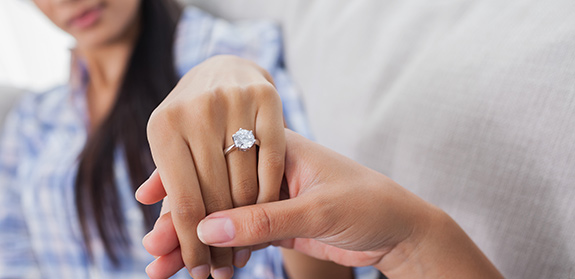Diamond Size Matters: Understanding the Impact of Carat Weight

Diamond Size Matters have long captivated our imagination, representing love, commitment, and luxury. When it comes to purchasing one, one of the most crucial factors to consider is the size of the diamond, often measured in carats. But does size truly matter? The answer is nuanced, combining personal preferences, budget considerations, and the science behind diamond grading.
The Psychology of Size:
Humans are visually oriented beings, often drawn to larger, more impressive objects. This innate tendency influences our perception of diamond size. A larger diamond can evoke a sense of grandeur, symbolizing the magnitude of the emotions it represents. It’s no wonder that many individuals aspire to own a sizable diamond, equating its size with significance and prestige.
Furthermore, societal norms and media portrayals often reinforce the idea that bigger is better when it comes to diamonds. From celebrity engagements flaunting extravagant stones to advertisements showcasing impressive carat weights, the message is clear: size matters. This cultural conditioning can influence individuals’ perceptions and preferences when selecting a diamond.
Understanding Carat Weight:
Carat weight is a standardized unit of measurement used to quantify a diamond’s size. One carat is equivalent to 0.2 grams, and diamonds are typically weighed to the nearest hundredth of a carat. However, carat weight alone does not determine a diamond’s value or beauty. Other factors lab grown diamonds, such as cut, color, and clarity, also play significant roles in determining a diamond’s overall appearance and worth.
The Impact of Size on Appearance:
While carat weight provides a numerical indication of a diamond’s size, its visual impact is influenced by several factors. The most crucial of these is the diamond’s cut. A well-cut diamond will exhibit optimal brilliance, fire, and scintillation, enhancing its visual appeal regardless of its size. Conversely, a poorly cut diamond may appear dull and lifeless, diminishing the perceived value of even the largest stone.
Additionally, the shape of the diamond can affect how its size is perceived. Certain diamond shapes, such as the round brilliant, are renowned for their ability to maximize perceived size due to their proportions and faceting. Other shapes, such as the emerald or Asscher cut, may showcase a diamond’s size differently, emphasizing clarity and symmetry over sheer carat weight.
Balancing Size and Quality:
When choosing a diamond, it’s essential to strike a balance between size and quality. While a larger diamond may be visually striking, sacrificing cut, color, or clarity for size can detract from its overall beauty. Conversely, a smaller diamond with exceptional quality may outshine a larger stone with inferior characteristics.
Budget considerations also come into play when selecting a diamond. Larger diamonds command higher prices, so individuals must prioritize their preferences based on their budget constraints. Fortunately, advancements in diamond cutting and grading have made it possible to find stunning diamonds in a range of sizes and price points, catering to diverse tastes and budgets.
Conclusion:
While the allure of a large Diamond Size Matters, size alone does not dictate a diamond’s beauty or value. Factors such as cut, color, and clarity are equally important in determining a diamond’s overall appearance and allure. When choosing a diamond, it’s essential to consider personal preferences, budget constraints, and the interplay between size and quality. Ultimately, the perfect diamond is one that reflects the unique tastes and emotions of its wearer, regardless of its size.
